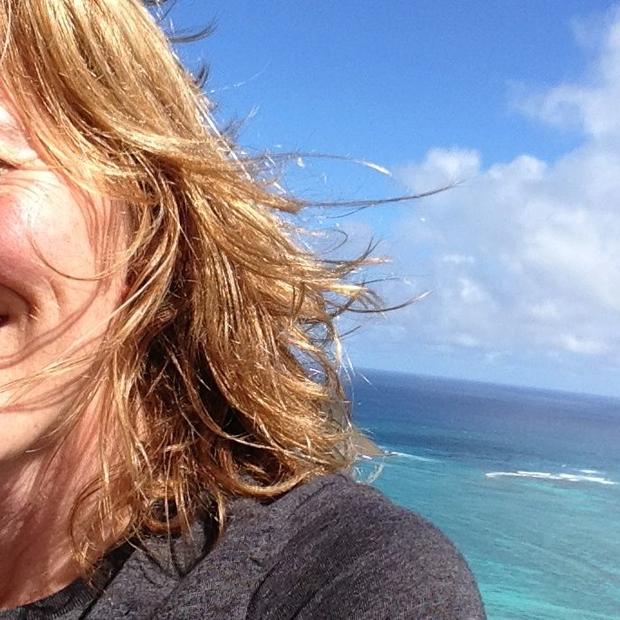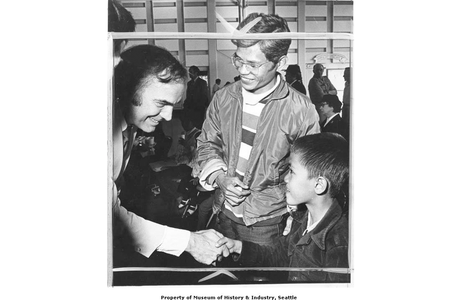Editor's Note: Whether physical or emotional, benign or malicious, neglect alters the developing brain's architecture and circuitry in profound ways that often lead to physical and behavioral problems throughout life. In Part 3 of our series on The Neglected Brain we look at the surprising capacity of the adult brain to overcome childhood neglect. Read Part 1, Part 2. Part 3 and Part 4.
Adolescence is a time when the human brain becomes increasingly sophisticated, a time when we are learning to control impulses, plan ahead, behave responsibly. "Self-regulation in early adolescence is stronger than it had been in childhood, but is still somewhat tenuous and easily disrupted,” writes Dr. Laurence Steinberg in his new book Age of Opportunity: Lessons from the New Science of Adolescence. Steinberg, a professor of psychology at Temple University, is a leading expert on the adolescent stage of human development. "During the second half of adolescence, self-control gradually becomes governed by a well-coordinated network of brain regions, which is helpful when we face a demanding task or distracting background conditions and we need additional brainpower."
Danielle Goodwin grew up with distracting — and often dangerous — background conditions. In fact, the combination of neglect and abuse that she experienced as a child predisposed her to a deeply troubled adolescence and young adulthood. Her method of coping with the chaos, of soothing herself, was to escape into drugs, which triggered the release of dopamine, the neurotransmitter whose dominion over the brain’s reward and pleasure centers gave Danielle the kind of pleasure that her human relationships rarely delivered.
Danielle was never parented. She grew up with a drug addicted mother. She never knew her biological father, but men — her mother's shady boyfriends — paraded through her childhood. "We were often hungry," she recalls. "My mom would be gone for days and she'd leave us in strange places." Danielle and her five siblings were so needy they’d cling to their mother whenever she was around, even gathering on the bathroom floor while she took a bath. "Anytime my mom was home and sober," says Danielle, "we would follow her anywhere she went, and just cherish those moments."
When Danielle was 11, her mother met a biker from Calgary and moved with him to Canada, taking the children with her. Her mother liked to go out drinking, and in Calgary she started bringing a dolled-up, underage Danielle along. The biker didn't like having his girlfriend’s kids around, and when the relationship inevitably soured, the family headed back to Montana.
Upon their return, Danielle’s mother reconnected with an ex- who had just been released from prison. He'd been serving time for statutory rape. The boyfriend would leer at Danielle and touch her butt. "He's weird," she remembers telling her mom.
Danielle was just 14 when her mother was sent off to rehab for 30 days. While her mother was gone, the boyfriend continued to come around and drink with Danielle. One night he raped her. She got pregnant — and also blamed. She ended up running away, first to Spokane and then to Seattle, where she was taken in by an older woman.
To earn her keep, the woman encouraged Danielle to have sex with adult men in exchange for drugs and money. When Danielle’s mother arrived in Seattle, she crashed there too, eventually getting them both kicked out. Danielle wound up in a dirty hotel in Pioneer Square, high on crack and nine months pregnant.
She was on a "date" when she felt the first pangs of labor. Young and inexperienced, she didn't know what was happening. Her mother called 911, and paramedics took Danielle to the UW hospital, where she gave birth to a baby girl. While she was recuperating from the delivery — and her newborn was detoxing from the crack — a social worker asked her, "Are you ready to change your life?"
State law requires social workers, educators, police officers, healthcare workers and other professionals step in whenever they suspect that a child has been the victim of abuse or neglect. But once they intervene, then what?
Dr. Eric Trupin, director of the University of Washington's Department of Psychiatry and Behavioral Sciences, helped establish the university’s Evidence-Based Practices Institute. The institute was created by state law (House Bill 1088) in 2007. Part of its mandate was to compile a database of interventions that work — and don’t work — when it comes to helping kids and families recover from neglect and abuse.
"What's so clear in the research is that there are biological, neurological or brain chemistry consequences to the way in which a child is managed or treated," says Trupin. "The nice thing is that [the consequences are] not immutable. We have a body of evidence that shows you can bring about change." That change, says Trupin, depends on schooling professionals about which interventions are effective, then making sure those interventions are available to children and their families. "We really need to increase access [for kids and families],” he says, “and train the professional workforce in these skills."
A poster child for parental neglect
 When Danielle Goodwin was a frightened young mother wrestling with drug addictions some 20 years ago not much was known about how to successfully help a teenager in her situation. The response was to put her in a foster home. Unfortunately, like her first foster care placement, this home was also unstable. The couple who took her in was struggling with marital problems. When the husband moved out, his wife started stepping out at night, leaving Danielle at home to take care of her own baby daughter and her four foster siblings. Some nights her foster mother would come home drunk with strange men in tow, a scenario that stirred up scary childhood memories for Danielle. “I was triggered by that," she says.
When Danielle Goodwin was a frightened young mother wrestling with drug addictions some 20 years ago not much was known about how to successfully help a teenager in her situation. The response was to put her in a foster home. Unfortunately, like her first foster care placement, this home was also unstable. The couple who took her in was struggling with marital problems. When the husband moved out, his wife started stepping out at night, leaving Danielle at home to take care of her own baby daughter and her four foster siblings. Some nights her foster mother would come home drunk with strange men in tow, a scenario that stirred up scary childhood memories for Danielle. “I was triggered by that," she says.
One night, abandoned at home with five screaming kids and no diapers, Danielle called Child Protective Services. After a social worker stopped by and questioned her foster mother, their relationship deteriorated, and Danielle checked out emotionally. She wasn't bonding with her foster mother, or her baby, or with anyone. "The streets were calling me," she says. "I ended up numbing my feelings with drugs and running from life."
The next decade in Danielle's life was a trail of heartache and dysfunction. In 2006, she realized she was pregnant when her water broke. It was her fifth pregnancy. She gave her first baby (the one she’d had at age 15) up. She had her second child at age 21, but the father was so violent that CPS intervened, placing her baby in a foster home. Danielle lost any chance of regaining custody of those two children. Her abusive partner was eventually imprisoned on drug charges. She had her third and fourth babies, both boys, in 2003 and 2005. Their father was also arrested on drug charges.
The father of Danielle's fifth child was in prison and about to be deported to his native Mexico when she went into labor. She gave birth to a baby girl in February 2007. She remained in the hospital for two days after the delivery, which gave her a rare moment of quiet and sobriety, time to rest and reflect on her life with a clear mind.
During those two days, her parental instincts welled up and she began to worry about her two toddlers back home in Lake City. Danielle had left the boys with a babysitter, but like everyone else in her life, the sitter was an addict and dealers and users were constantly coming and going from the house. "I was physically, mentally, emotionally devastated," Danielle says. "I didn't have any family that could take them. I'm like, I'm calling CPS."
Goodwin's call to CPS was one of more than 28,000 suspected child neglect cases that were opened and investigated in Washington State that year, according to Partners for our Children. In response to her call, a caseworker visited the home and placed the boys and their new baby sister with Danielle’s sister. But her sister wasn’t stable either and when she became homeless a month later, CPS had to find another placement for them.
Danielle was a textbook risk for parental neglect. Poor, homeless, addicted to drugs, a victim of domestic violence, she personified many of the problems that experts say lead to child neglect. And things were about to get worse.
Danielle’s pimp refused to let her visit her three children in foster care. He wanted her to work, and he threatened to kill her if she didn't. Because she had failed to visit her kids, she was on the verge of losing them permanently.
One day, angry about money he thought Danielle owed him, her pimp showed up, gun in hand, at a motel in Edmonds where she had been staying. He put the barrel to her ex-roommate's temple and demanded to know Danielle’s whereabouts. Fortunately, the ex-roommate had no idea where Danielle was. Since her pimp couldn't get money, he stole a Cadillac instead, leading police on a wild chase that ended in a convenience store parking lot where he smashed the stolen Caddy into their cruisers. Officers shot him twice before arresting him and sending him to prison.
It was so rare for anyone to be nice to Danielle that she can remember every act of kindness. The woman who picked her up after she'd been gang raped, gave her a ride and bought her a sandwich. The man who saw her standing on the railroad tracks wearing only lingerie, who gave her a coat and $10. The drugstore clerk, who told her, "I'm going to pray for you."
Interventions in Danielle's life had been few and far between and mostly ineffective. She had fallen through the cracks of the social service system, and because she had fallen, her kids were at high risk of falling too. Danielle doesn't blame her mother for her troubles. Her mother was a victim too, sexually abused by a relative when she was only eight years old. Her great grandmother, of Chippewa-Cree descent, had been ripped from her home as a young child and placed in a boarding school, where she was sexually abused. Abuse and neglect were like family heirlooms.
"I want my kids back."
 James Encinas first saw Danielle Goodwin in 2007, at a halfway house on Capitol Hill. He was looking out his second-floor window. Danielle was standing on the sidewalk below, yelling up to a friend to let her inside and ducking out of sight whenever a police car rolled by. There were several warrants out for her arrest on prostitution charges.
James Encinas first saw Danielle Goodwin in 2007, at a halfway house on Capitol Hill. He was looking out his second-floor window. Danielle was standing on the sidewalk below, yelling up to a friend to let her inside and ducking out of sight whenever a police car rolled by. There were several warrants out for her arrest on prostitution charges.
James had had his own troubles with the law, but he’d been clean and sober for two years and had a stable job. He was making his way in the world.
Hearing her pleas, he offered to put her up for a night or two. Danielle was pretty sure she knew what that meant. Turned out she was wrong. "He made me a bed on the couch and he slept on the floor," she recalls. "Then he let me go in the morning. I thought that was really weird. My experiences with men before that had been much different.”
James was different. He was the first person who ever listened to what Danielle had to say, the first to point out her strengths and the first person to offer genuine help. He knew the hard work she would have to do to get her life together, because he had started down that path himself, and he believed she could do it.
"You know you're a survivor, right?" he told her.
"He was the first person to say that," says Danielle. "Everyone else told me I was stupid."
He also asked her what she wanted out of life.
"I want my kids back," she told him.
James seemed to know and do, intuitively, what experts in many fields, from social work to neuroscience, all agree is key to helping people transform their lives. He cared and he showed Danielle ways to handle situations. "I was trying to find my way through life,” says Danielle. “Trying to find solid ground to stand on, without any examples. James started modeling for me how to advocate for myself."
Danielle was 29 when she met James Encinas. Perhaps the brain development delayed in so many neglected kids had finally occurred, allowing her to begin making the more sophisticated, adult decisions that Dr. Laurence Steinberg refers to in his book about adolescence. The idea of imagining a future and planning for it was beginning to take hold in Danielle, whose decision-making process had, until then, been nothing but a series of reactions.
Most studies of the neglected brain paint a grim picture, with neglected children having to make a go of life with a smaller brain volume, altered brain architecture and impaired circuitry that set the stage for physical and mental health problems later on. "That can sound a little depressing," allows Dr. Kate McLaughlin, an assistant professor of psychology at the University of Washington, who studies trauma, neglect and the brain. "You lose those synaptic connections, but that doesn't mean the system can't recover."
In fact, the brain is much more adaptive than scientists had previously thought. Plasticity refers to the brain's ability to change and adapt, to create new connections and pathways in response to changes in a person’s behavior or environment. Scientists used to believe that plasticity was only possible in the child brain, with adult brains becoming more rigid. More recent evidence shows that the adult brain is also capable of generating new cells and new circuitry — of adapting.
Exactly how we stimulate this rejuvenation, says McLaughlin, “is one of the key questions facing cognitive neuroscientists: How we can reinstate plasticity in systems that have not gotten the kinds of inputs that were expected."
Coming Monday, Part 4: Danielle Goodwin's long journey from a severely neglected childhood to a stable happy home, family and career. Read Part 1, Part 2 and Part 4.
Image of young girl's brain courtesy of http://www.amenclinics.com. Photo of James Encinas and Danielle Goodwin by Allyce Andrew.


